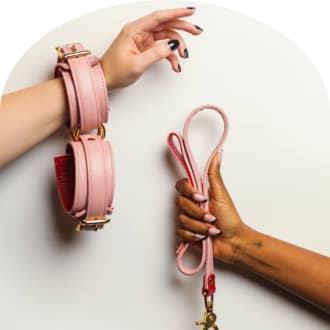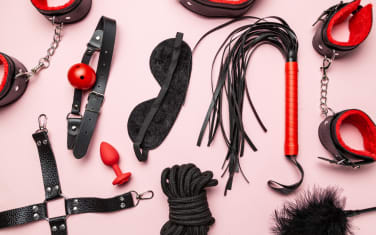The Art of Control: What is a Power Play Kink?
We experience power dynamics every day?at work, at home, and within our friendships or family structures. These interactions often exist without question or interrogation, which is why so many people love erotic power exchange: it allows us to explore kink and control consensually.
Whether you melt at the thought of restraining your partner to a bedpost or allowing your mind to quiet as an open palm strikes your thigh?you get to set the parameters of play.
Power dynamics in kink must be negotiated between partners before you dive into a scene, and especially before bigger commitments. Unlike so many experiences in our day to day lives, healthy kink relationships require complete agency from everyone involved.
How does a power play kink work?
Power Play falls under the BDSM umbrella. But it doesn?t always include bondage, sadism, or masochism. So if you don?t like the idea of ball gags or whips, that?s totally ok! But what is a Power Play kink?
At its core, Power Play involves the eroticization of domination and submission. The desire to be in control or surrender completely looks different for everyone.
Partners explore the exchange of power through sub and Dom/me roles (or the fluctuation between both for switches). They include both physical and psychological kink play that ranges from dirty talk to relentless edging and orgasm denial.
If you?re looking to take things up a notch within your sexual power dynamics, tons of people love using sex toys to deepen kink play.
A Domme may blend the sensations of pain and pleasure by fastening nipple clamps to her submissive as she teases them with a vibrator. That same submissive may also enjoy being placed in a cage when they break their Domme?s rules as a form of discipline.
While some types of Power Play kinks are limited to the duration of a hook up or play session/scene, others happen over the course of long term relationships. Lifestyle D/s dynamics are also referred to as Total Power Exchange where a submissive consents to give their Dominant control over more than just play: what they wear, what they eat, and how they act outside of the bedroom. A submissive in a TPE dynamic may be collared 24/7 with a discreet piece of jewelry that would only register as a choker or necklace to the vanilla eye.
What you want depends on your Dominant or submissive desires, your knowledge or understanding of different kinds of play, and the level of trust you?ve built with your partners. This invites us to get into some fun and intimate self reflection.
D/s dynamics explained
Dominance and submission are two kinds of consensual kink roles?each with its own style or set of traits. As you continue exploring your kink identity, the kinds of play you enjoy become just as unique as your personality.
Dominance + Dominant roles
A Dominant partner, also known as a Dom or Domme/Domina, guides their submissive through play. Some Doms get a thrill out of being worshipped, while others love to be challenged. Common
Dominant archetypes include:
- Pleasure or Sensual Dom/me: Enjoys pleasuring and overwhelming their sub
- Sadist: Enjoys punishing, humiliating, spanking or inflicting pain on their sub
- Daddy / Mommy / Caregiver: Enjoys taking care of and providing for their sub
- Primal Hunter: Enjoys chasing, tracking, and marking their sub
- Rigger or Rope Top: Enjoys tying, binding, and restraining their sub
- Owner / Master: Enjoys being served by and controlling the appearance or actions of their sub
Above all, good Dominants care deeply about the needs and desires of their submissives. Their ?power? is selfless rather than self-centered. Often, that looks like putting your sub?s safety before the high of a power trip.
Rope Dominants model this principle well. They keep a pair of shears nearby when tying, ready and prepared to cut off an expensive rope as soon as a Safe Word is spoken or their submissive may be in danger. This is what separates Power Play from coercion or abuse.
Submission + submissive roles
A submissive partner, also known as a sub, follows the lead and instruction of their Dominant. While subs give up control during play, they have just as much agency and equality in setting the terms of the power exchange dynamic as their Dominant. A sub always has the power to end play. Some common submissive archetypes include:
Brat: Enjoys challenging authority because they?re excited for punishment, discipline, or spoiling
- Rope Bunny / Bottom: Enjoys being tied and restrained
- Impact Bottom: Enjoys being spanked, slapped, and hit
- Masochist: Enjoys being humiliated, degraded, and hurt
- Primal Prey: Enjoys being chased, hunted, caught, and claimed
Submissives are just as responsible for their own safety as their Dominant. Establishing trust and boundaries with your partner allows for creative play that's exciting for everyone involved. That means doing your research, reflecting on your desires, and committing to stating your limits.
Is power play safe?
Consent is the overarching principle in all kinky and BDSM dynamics. But even if consensual Dominance and submission is present, are the various acts and toys that come up Power Play safe?
Kinks like breath play, impact, and sharps can be dangerous. There?s a range of gear involved in BDSM dynamics that requires deep research and education to ensure correct technique and aftercare.
In addition to consent, you should use RACK and PRICK. These principles offer a helpful framework for approaching toys and gear that require bigger discussions, like rope tying, whips, or Wartenberg Wheels.
What is RACK?
In 1999, Gary Switch coined the term Risk Aware Consensual Kink (RACK). The point of RACK is to encourage partners to acknowledge the inherent risks or dangers of certain play through kink negotiation and consent.
In pre-play conversations with your partner you might say:
- I?m excited to try full-body bondage with you, can we come up with a Safe Word or Action system that works when I?m completely tied down?
- I?m curious about electro-play, but I?m still learning the basics. Can we take a class together?
What is PRICK?
Personal Responsibility Informed Consensual Kink (PRICK) popped up as a response to RACK. Basically, it isn?t always enough to agree that a kink might be ?unsafe.? Everyone involved needs to do their own research and complete the proper training to fully understand what?s going on, how to mitigate harm, and how to take care of each other afterwards.
This can look like reading books and forums or watching various tutorial videos and even finding a community class for different play, such as Consensual Non-Consent.
RACK and PRICK should be a part of everyone?s power exchange kink safety toolbox.
Signs you might be into power play
Power exchange is a spectrum and no matter where you fall, you should feel empowered to explore your desires.
In broad terms, if you get excited at the idea of giving up or taking control within kinky and/or sexual dynamics, you?re in the right place!
Here are some specific signs you may be Dom/me leaning:
- You enjoy guiding the flow of play
- You love creating rules
- You find giving commands thrilling
- You?re excited about being worshipped or served
- You enjoy humiliating or degrading your partner
- You like to physically overwhelm or restrain your partner
Here are some giveaways that you may be sub leaning:
- You love following your partner?s lead
- You melt when your partner tells you what to do
- You enjoy the thought of being owned or claimed by your partner
- You like the idea of getting tortured or humiliated by your partner
- You get excited at any opportunity to serve or worship your partner
If you like some combination of Dom/me and sub experiences, you might be a switch! Switches enjoy flowing between control and surrender either within a given play session or alternating between them.
Beginners guide to power exchange kinks
The idea of creating a ?scene,? a pre-negotiated experience that involves specific acts like impact play or predicament bondage, can seem daunting. In reality, play sessions are an exciting opportunity to explore yourself and everything from BDSM apparel to tools or implements.
If you?re a Dominant wondering how to structure play, try writing down the kinds of acts, toys, and gear you?d like to use. Once you have a list, separate them out into four categories:
- Excitement: Foreplay and other acts that ?warm up? to more intense play like kissing, teasing, and dirty talk.
- Plateau: This is the main event of play, and lasts the longest. If you enjoy restraint, try several bondage positions here, or if you?re a Sensual Dom/me try different modes of stimulation or excitement like ball gags, blind folds, or temperature play.
- Orgasm: This is the height of play but does not always include a ?climax? if you enjoy orgasm ruining, denial, or edging. If this is a kink only scene, like an impact session, you?d use your heaviest floggers, whips, paddles, or canes here.
- Resolution: Aftercare! This can look like bruise or wound care, baths, a hearty meal, and discussion of the scene (positives, pain points, and what could change next time).
This basic guide can be expanded into complex scenes that last for an entire day, or simple ones that only last for thirty minutes to an hour. Come back to it over time, and try out different variations!
Power play kink essentials: toys, gear & more
You don?t need a specific outfit to be a Dom/me or sub so don?t let that deter you, but fabrics like leather, mesh, latex, and PVC can add a visual or sensory element to play.
In addition to intricate lingerie or full-body gimpsuits, there?s a whole world of (sex) toys to explore Dominance and submission safely.
What is the best sex toy for power play?
The best sex toys for Power Play kinks will depend on your particular D/s dynamic, and how experienced you are. You also don?t have to use any toys at all if you prefer psychological or body to body play. But if you?re open to trying something new, D/s dynamics are often reinforced through different equipment.
For example, submission can be affirmed through bondage or restraints. A Dom/me might tie her sub down and limit movement by using cuffs, ropes, spreader bars, or even household items like scarves and belts (these are some of the top restraint toys for power dynamics).
For those that are just starting out and wondering how to use bondage toys in power dynamics, you can try Underbed Restraints. They?re perfect for total body limitation while you explore sensory play like feather tickling or multiple orgasms with vibrators.
Other beginner friendly kink toys can include nipple suckers, blindfolds, collars, and leashes. While collars can be an extremely important symbol of committed D/s dynamics, they?re regularly used in Pet Play where a submissive assumes the role of dog, kitten, or other companion.
Choosing a new kink toy
Whatever new goodies you decide on, it?s important to seek out kink-friendly sex toy brands like Babeland that source quality materials. Here are a few sex toy safety tips for beginners:
- Never use a (new) toy without discussing it with your partner first. If you?ve always used palms for spanking, your partner may not be interested in paddles or floggers.
- Take note of any skin sensitivities when buying gear (lots of people have latex allergies)!
- Make sure to do your research before using any toys that could cause bruising, marks, or cuts (this includes restraints of any kind, nipple suckers, and impact tools).
- Buy foreplay and aftercare items along with your toys (this can include water-based lube for vibrators and dildos or cooling lotions for impact marks).
How to communicate about power dynamics in kink
The most important part of all great kinky dynamics is clear and open communication.
Establishing a baseline of vulnerability makes it easier to be present during play and within longer-term D/s relationships. We?re still learning and growing every day, meaning our desires can change over time. You may discover new needs while with a partner and even during play itself.
Still, it?s worth doing as much self-reflection as possible so you can have a full conversation with your Dominant or submissive. Here are some questions worth asking yourself:
- How do I want to feel as a Dominant/submissive? Adored? Feared? Needed? Tortured?
- How do I want my submissive/Dominant to feel when I?m with them? Used? Degraded? Desired? Empowered? Inescapable?
- What makes a submissive/Dominant worthy of my trust?
You can answer these with a partner, but it?s nice to think about them alone so your mind isn?t swayed by what you think your partner needs or wants.
Here are some questions to ask and answer with your partner:
- What kinds of play excite you most? Have you tried them yet?
- What are your boundaries, hard limits, and no-touch zones if any?
- What kinds of foreplay and aftercare support you best when entering or exiting a play session?
These questions will help you devise a list of play that?s on the table, some you?re willing to try under the right circumstances (like with extra research), and what?s a total no-go.
No matter what side of the power exchange you?re on, the ultimate goal is the same: to explore freely, to be fully seen, and to build trust with partners who honor your agency and make you feel safe.




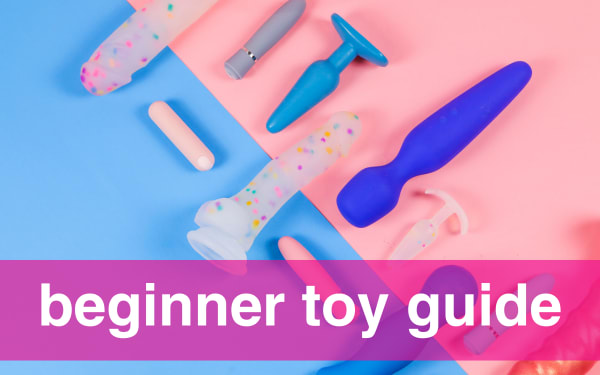

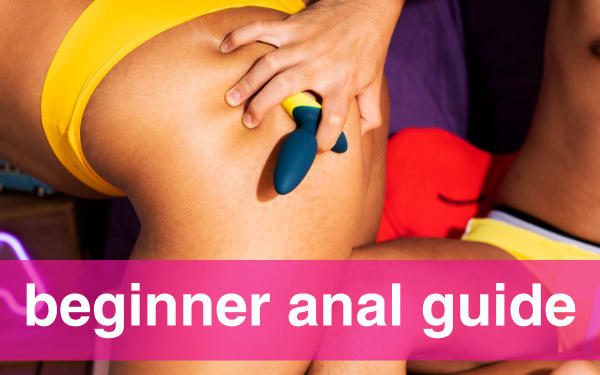

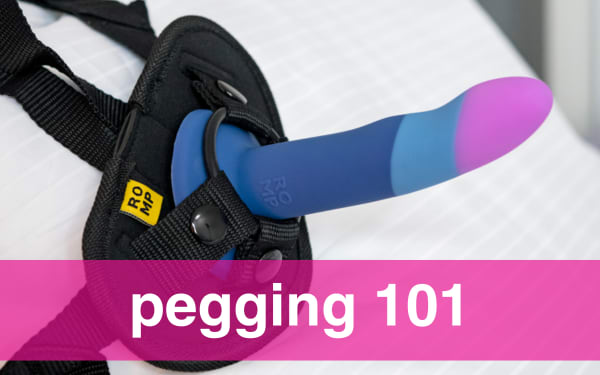



![What are D/s dynamics?] What are D/s dynamics?]](https://res.cloudinary.com/i8s/image/upload/c_scale,f_auto,q_auto,w_330/v1/content/bl/myxljss8lji5co4af2a2)
